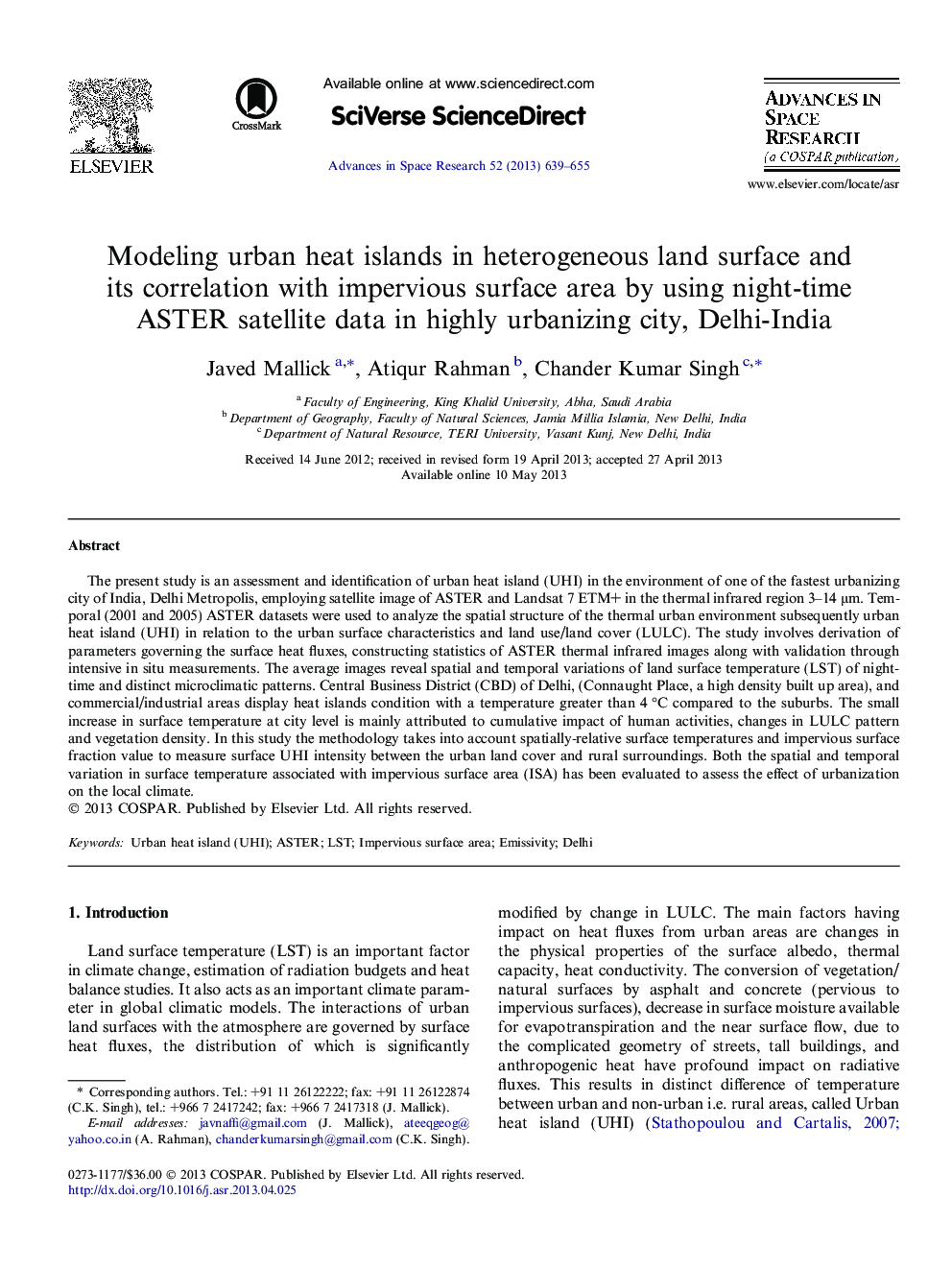| Article ID | Journal | Published Year | Pages | File Type |
|---|---|---|---|---|
| 10694356 | Advances in Space Research | 2013 | 17 Pages |
Abstract
The present study is an assessment and identification of urban heat island (UHI) in the environment of one of the fastest urbanizing city of India, Delhi Metropolis, employing satellite image of ASTER and Landsat 7 ETM+ in the thermal infrared region 3-14 μm. Temporal (2001 and 2005) ASTER datasets were used to analyze the spatial structure of the thermal urban environment subsequently urban heat island (UHI) in relation to the urban surface characteristics and land use/land cover (LULC). The study involves derivation of parameters governing the surface heat fluxes, constructing statistics of ASTER thermal infrared images along with validation through intensive in situ measurements. The average images reveal spatial and temporal variations of land surface temperature (LST) of night-time and distinct microclimatic patterns. Central Business District (CBD) of Delhi, (Connaught Place, a high density built up area), and commercial/industrial areas display heat islands condition with a temperature greater than 4 °C compared to the suburbs. The small increase in surface temperature at city level is mainly attributed to cumulative impact of human activities, changes in LULC pattern and vegetation density. In this study the methodology takes into account spatially-relative surface temperatures and impervious surface fraction value to measure surface UHI intensity between the urban land cover and rural surroundings. Both the spatial and temporal variation in surface temperature associated with impervious surface area (ISA) has been evaluated to assess the effect of urbanization on the local climate.
Related Topics
Physical Sciences and Engineering
Earth and Planetary Sciences
Space and Planetary Science
Authors
Javed Mallick, Atiqur Rahman, Chander Kumar Singh,
